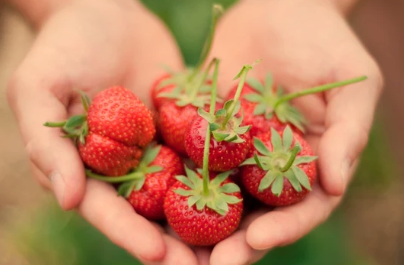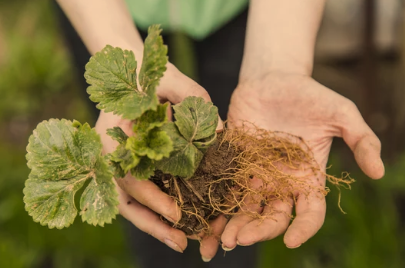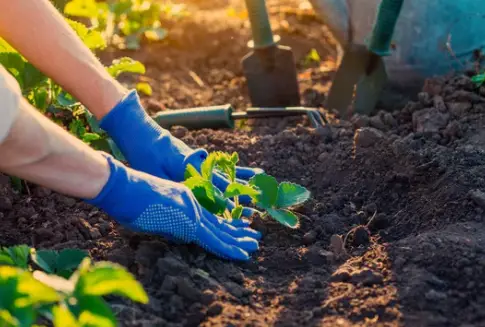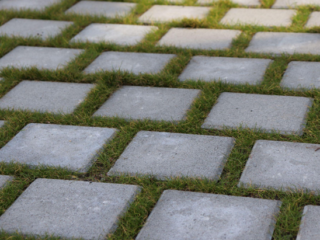Strawberries are delicious and versatile fruits that can be grown in your backyard garden or even in small containers.
If you’re starting your strawberry patch from seeds, it’s crucial to provide them with the right amount of water for successful germination and healthy growth.
In this blog post, we will explore how often to water strawberry seeds to ensure optimal conditions for their development.
Strawberry Seed Germination

Strawberry seed germination is the process by which the seed transforms into a seedling, establishing its root system and eventually growing into a mature plant.
This phase is critical for the plant’s overall development, and water plays a vital role in this process.
Adequate moisture is essential for the seed coat to soften, allowing the seed to take up water and initiate germination.
Factors affecting germination include water availability, temperature, light, and oxygen.
Water requirements can vary depending on the specific strawberry variety and environmental conditions.
The general guideline is to keep the seeds consistently moist but not saturated.
Initial Watering:

Before planting strawberry seeds, it’s essential to prepare the soil properly.
The soil should be well-draining to prevent waterlogging, which can lead to root rot and hinder seed germination. If the soil is heavy or compacted, consider adding organic matter such as compost to improve its structure and drainage.
When planting strawberry seeds, provide the right amount of water to promote seed establishment. Gently water the soil until it’s evenly moist but not soaked. Excessive watering can displace the seeds or cause them to rot. Aim for a balance between adequate moisture and preventing waterlogging.
Post-Germination Watering:

As the strawberry seeds begin to sprout, the watering frequency needs to be adjusted.
At this stage, it’s crucial to monitor the soil moisture levels to ensure the seedlings receive adequate hydration without overwatering.
Check the soil regularly by inserting your finger about an inch into the soil.
If it feels dry at this depth, it’s time to water. Provide enough water to moisten the soil thoroughly, but be cautious not to drown the seedlings.
The goal is to maintain consistent moisture without allowing the soil to become waterlogged.
Factors Affecting Watering Frequency
Several factors can influence the watering frequency for strawberry seeds:
Environmental Factors
Temperature, humidity, and sunlight can significantly affect how often you need to water your strawberry seeds. Higher temperatures and low humidity levels can cause the soil to dry out more quickly, requiring more frequent watering.
Soil Composition and Drainage
The soil’s composition and drainage properties play a crucial role in determining how often you should water your strawberry seeds. Sandy soil tends to drain faster and may require more frequent watering, while clay soil retains moisture for longer periods.
Seedling Age and Size
As the seedlings grow, their water needs will increase. Young seedlings have shallower roots, so they are more susceptible to drying out. Adjust the watering frequency as the seedlings mature and develop a stronger root system.
Signs of Under- and Over-Watering:
Proper watering is essential for the health and growth of strawberry seeds. Here are some signs to help you determine if your seeds are receiving the right amount of water:
Underwatering:
- Wilting or drooping leaves
- Dry, crumbly soil
- Slow growth or stunted seedlings
Overwatering:
- Yellowing leaves
- Mold or fungal growth on the soil surface
- Root rot or a foul smell from the soil
If you notice signs of underwatering, increase the frequency of watering, and ensure the soil is adequately moist. If signs of overwatering are evident, reduce the watering frequency and allow the soil to dry out slightly between waterings.
Watering Techniques and Best Practices
The method you choose to water your strawberry seeds can impact their growth and development. Consider the following techniques and best practices:
Sprinklers
Sprinklers provide a gentle, even distribution of water. However, they may not be suitable for young seedlings as the force of the water can displace the seeds or damage delicate shoots.
Drip Irrigation
Drip irrigation is an efficient method that delivers water directly to the soil near the roots. This method minimizes water waste and helps prevent foliar diseases. It is particularly useful for larger strawberry patches or container gardens.
Hand Watering
Hand watering allows for more control and precision. Use a watering can or a gentle hose attachment to provide a slow, even stream of water directly to the soil. This method is beneficial for smaller gardens or when tending to individual seedlings.
Regardless of the watering method, it’s best to water early in the day to allow the leaves to dry before evening, reducing the risk of fungal diseases. Avoid overhead watering as much as possible to prevent wetting the foliage excessively.
Adjusting Watering Frequency as Plants Mature

As strawberry plants mature, their water requirements may change. During the fruiting season, it’s essential to maintain consistent moisture levels to support the growth and development of the fruit.
Monitor the soil moisture regularly, and adjust the watering frequency based on the plant’s needs. Consider environmental conditions such as increased temperatures or reduced rainfall, as they may necessitate more frequent watering.
Other Tips for Successful Strawberry Seed Growth

To ensure the successful growth of your strawberry seeds, consider these additional tips:
Fertilization and Soil Nutrient Management
Provide adequate nutrients by applying a balanced fertilizer specifically formulated for strawberries. Follow the manufacturer’s instructions for application rates and timings.
Weed Control and Proper Spacing
Keep the area around your strawberry plants free from weeds, as they compete for nutrients and water. Proper spacing between plants allows for good air circulation, reducing the risk of diseases.
Regular Monitoring and Adjustments
Regularly inspect your strawberry plants for any signs of stress, pests, or diseases. Adjust your watering practices and make necessary changes based on the plant’s overall health.
Conclusion
Growing strawberries from seeds can be a rewarding and enjoyable experience.
With the specific watering needs of strawberry seeds, you can provide optimal conditions for their successful germination and growth.
Remember to strike a balance between underwatering and overwatering, adjust the watering frequency as plants mature, and consider environmental factors that may impact moisture requirements.
With these guidelines in mind, you’ll be well on your way to a flourishing strawberry patch. Happy gardening!
Reference
Gardening Organizations and Websites:
- The National Gardening Association (NGA): www.garden.org
- Gardening Know How: www.gardeningknowhow.com




